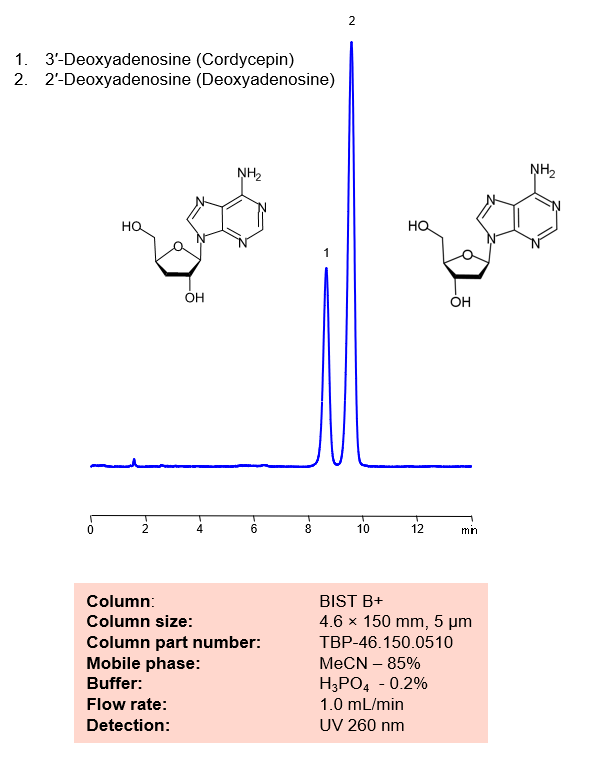HPLC Method for Cordycepin, Deoxyadenosine on BIST B+ by SIELC Technologies

Cordycepin is an adenosine analogue with the chemical formula C10H13N5O3. It is reported to prevent cell reproduction in various cancer cells. It also might possess antioxidant and anti-inflammatory properties, when considered in addition with it’s ability to cross the blood-brain barrier, it may become widely used in pharmaceuticals.
Deoxyadenosine is a deoxyribonucleoside with the chemical formula C10H13N5O3. It is a derivative of adenosine. High presence of it can kill T lymphocytes and kill those cells, leading to adenosine deaminase severe combined immunodeficiency disease, also known as ADA-SCID.
Cordycepin, Deoxyadenosine can be retained and analyzed using the BIST B+ stationary phase column. The analysis utilizes an isocratic method with a simple mobile phase consisting of water and acetonitrile (MeCN) with a Phosphoric Acid buffer. Detection is performed using UV.
Condition
| Column | BIST B+, 4.6 x 150 mm, 5 µm, 100 A, dual ended |
| Mobile Phase | MeCN – 85% |
| Buffer | H3PO4 – 0.2% |
| Flow Rate | 1.0 ml/min |
| Detection | UV 260 nm |
| Peak Retention Time | 8.2, 9.8 min |
Description
| Class of Compounds | Nucleosides |
| Analyzing Compounds | Cordycepin, Deoxyadenosine |
Application Column
BIST B+
Column Diameter: 4.6 mm
Column Length: 150 mm
Particle Size: 5 µm
Pore Size: 100 A
Column options: dual ended
Deoxyadenosine





